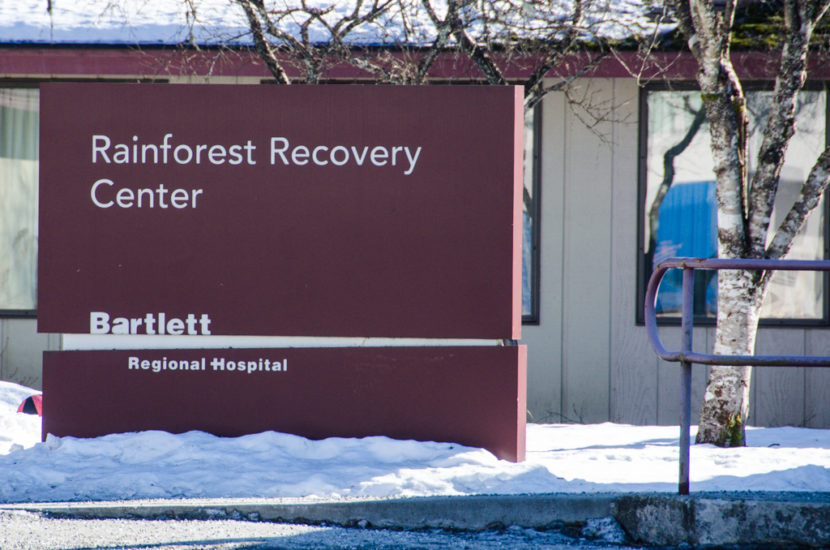
Changes may be in store for the sleep-off program at Bartlett Regional Hospital.
The program provides a place for inebriated people to sleep until they sober up, but the hospital doesn’t view this as a medical service.
That’s why Juneau officials have been looking to move the program off campus. And Capital City Fire/Rescue is thinking about taking it on.
According to Alaska state law, throwing intoxicated people in jail for the night is the option of last resort for local authorities.
Fire Chief Rich Etheridge said that’s why many communities provide an alternative.
“The first priority is to take them home or to a safe place where a friend or family member can care for them,” Etheridge said. “If that’s not available, then we take them to a sleep-off center like we currently have.”
Right now, the program is run by the hospital’s addiction treatment unit, Rainforest Recovery Center. It’s staffed by EMTs who use a van to pick up and evaluate intoxicated people.
If they can’t take them home, they bring them to the sleep-off center.
Capital City Fire/Rescue has offered to take over the program, moving it to a space owned by St. Vincent de Paul near the airport.
The new sleep-off center would only be available for 12 hours overnight, rather than the current 24-hour service.
At a committee meeting last week, the Juneau Assembly voted to continue exploring the proposal, despite some concerns over the cost.
But Assembly member Loren Jones voted against it, saying he’s adamantly opposed to seeing sleep-off moved off Bartlett’s campus.
Jones spent several decades working in alcohol and drug abuse services. He wants to make sure people have access to substance abuse treatment beyond sleep-off.
“They can bring a counselor in from the treatment program. They can bring a staff person from detox to talk to this person,” Jones said. “You can’t do that if they’re seven miles away at St. Vincent de Paul, as opposed to being on the campus. It’s not as efficient. It doesn’t work as well.”

Bradley Grigg has been the hospital’s chief behavioral health officer since 2017. He said Rainforest Recovery staff offer treatment information and paperwork to sleep-off users when they wake up, but it’s rare to see someone go straight into the detox unit.
He said they’re more likely to return later when they’re ready.
“We just haven’t seen a single individual go straight from sleep-off into Rainforest in the 20 months I’ve been at Bartlett,” Grigg said.
Grigg said moving sleep-off has been a discussion at the hospital for years. They want to focus more on recovery programs and have plans for a drug treatment unit soon.
“It’s just a matter of when, and part of the reason that this kind of escalated to this point with the sleep-off program is, currently, where the sleep-off program is physically located on the facility is where the detox program will be,” Grigg said.
Grigg also said they’ve seen a big drop-off in the number of people using sleep-off over the last year-and-a-half. They now serve on average 24 individuals a month and go some days without any users at all.
He credits that to the opening of the Housing First complex in 2017, which brought 32 formerly homeless people off the street.
While that means more empty beds in sleep-off, EMTs on staff are now spending more time transporting intoxicated people back to Housing First.
And shifting that responsibility to the fire department could mean tying up staff that would rather be responding to emergencies than shuttling people who are drunk.
Travis Wolfe is president of the union representing local firefighters. He’s been following the proposal and said the union is confident that the decision-makers are evaluating all pros and cons.
“We will support, as the firefighters of this community, anything that will help improve and maintain the Rainforest program in whatever iteration that it may become,” Wolfe said.
Another goal of the proposal is to create a pipeline for Capital City Fire/Rescue to recruit more career staff. The department has struggled with recruitment and staffing amid an increase in calls the last few years.
Etheridge said it takes several hundred hours to become a firefighter or a paramedic, but offering entry-level emergency trauma technician, or ETT, positions in sleep-off would help people work toward that while getting paid.
“We can get a student right out of high school with their ETT certification and plug them right into a career where they’re making $50,000, $60,000 a year without having to go through college,” Etheridge said.
The proposal adds six new positions for the department. Etheridge said the team could also serve as a backup ambulance crew in disaster situations.
The Assembly will consider the proposal again at a future meeting.
